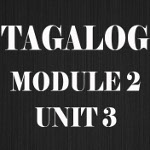OBJECTIVES
At the end of this module, you will be able to perform the following tasks in Pilipino:
- Greet civilians and members of the military.
- Use Philippine military ranks in greetings.
- Respond to greetings.
- Introduce yourself and others.
- Respond to introductions.
Audio for this lesson
Pagbati at Pagpapakilala
Greetings and Introductions
| Gng. Cruz: | Magandang gabi po. | Good evening. |
| Bob Turner:. |
Magandang gabi po naman, Gng. Cruz. Kumusta po kayo? | Good evening (too), Mrs. Cruz. How are you? |
| Gng. Cruz: | Mabuti po naman, at kayo? | Quite well, and you? |
| Bob Turner:. | Mabuti po naman. Ginang Cruz, ito po si Anne, maybahay ko. | Quite well, Mrs, Cruz, this is Anne, my wife. |
| Gng. Cruz:. | Ikinagagalak kong makilala kayo, Ginang Turner. | I’m pleased to meet you, Mrs. Turner. |
| Anne Turner:. | Nagagalak din po akong makilala kayo, Ginang Cruz. | I’m also pleased to meet you, Mrs. Cruz. |
Notes on the Conversation
Magandang is maganda (literally, “nice,” “pretty,” or “beautiful”) plus the linker –ng. One of the functions of a linker is to connect words which form phrases.
Po is a particle used in respectful address, roughly equivalent to “sir” or “ma’am.”
Kumusta, from the Spanish como está, means “How are you?”
Kayo, the plural form of ka (“you”), is used for politeness, even when addressing one person.
Si is used to mark the topic or subject of a sentence when it is someone’s name.
Ko is “me,” “my,” or “mine.”
Kong is ko plus the linker –ng.
Din and naman both mean “also,” “too.” In expressions like Mabuti po naman, naman is used like “quite” or “pretty” in such English expressions as “quite well,” “pretty well/fine.
Nagagalak and ikinagagalak are two different verbs formed from the base galak (“happiness”).
Nagagalak akong makilala kayo means literally, “I am pleased that you are introduced.”
Ikinagagalak kong makilala kayo is literally, “That you are introduced pleases me.”
Both sentences say the same thing, but the first focuses on the feeling of the speaker, while the latter focuses on the cause for the feeling.
EXERCISES
Exercise 1. Repetition
| Magandang umaga. | Good morning. |
| Magandang tanghali. | Good noon (used from 12:00 – 1:00). |
| Magandang hapon. | Good Afternoon. |
| Magandang araw. | Good day (used from morning to sunset). |
| Magandang gabi. | Good evening. |
Exercise 2.
| You hear: | Magandang umaga po. |
| Say: | Magandang umaga po naman. |
Exercise 3. Repetition
| tinyente | lieutenant |
| kapitan | captain |
| medyor | major |
| koronel | colonel |
| komander | commander |
| admiral | admiral |
| sarhento | sergeant |
Exercise 4.
| You hear: | lieutenant | ||||||
| Say: | Magandang araw po, Tinyente. | ||||||
|
|||||||
Exercise 5.
| Note that Ginang is abbreviated Gng., Ginoo is G. and Binibini is Bb. A linker, ng, is added to Ginoo (“Mr.”) and Binibini (“Miss”) when used with names; e.g., Ginoong Cruz and Binibining Reyes. However, Ginang (“Mrs.”) remains the same with or without names. “Mr. and Mrs.” is Ginoo at Ginang. |
| You hear/see: | Juan | ||||||||
| Say: | Magandang tanghali sa iyo, Juan. | ||||||||
| OR | |||||||||
| You hear/see: | Ginoong Cruz | ||||||||
| Say: | Magandang tanghali po, Ginoong Cruz. | ||||||||
|
|||||||||
Exercise 6. Say in Pilipino:
| You hear/see: | Mrs Ruiz. |
| Say: | Magandang umaga po, Ginang Ruiz. |
| Good noon, Carlos. | |
| Good evening, Mr. Cruz. | |
| Good afternoon, Pacita. | |
| Good day, Miss Ramirez. | |
| Good evening, Lieutenant. | |
| Good afternoon, Ana. | |
| Good noon, Sergeant. | |
| Good evening to you all. | |
Exercise 7.
| You hear/see: | Lieutenant | ||||||
| Say: | Magandang umaga po, Tinyente. Kumusta po kayo? | ||||||
| OR | |||||||
| You hear/see: | Lydia | ||||||
| Say: | Magandang umaga sa iyo, Lydia. Kumusta ka? | ||||||
|
|||||||
Exercise 8. Say in Pilipino:
Good morning, Mrs. Paraiso. How are you?
Good afternoon, Roberto. How are you?
Good noon, Miss Ruiz. How are you?
Good evening, Captain. How are you?
Good day, Tomas. How are you?
Exercise 9.
| You hear: | Magandang umaga po. Kumusta po kayo? |
| Say: | Mabuti po naman. |
| OR | |
| You hear: | Magandang gabi sa iyo. Kumusta ka? |
| Say: | Mabuti naman. |
Exercise 10. Repetition
| Note: Asawa is used colloquially for “wife” and is much more common than the more formal maybahay. |
| Ito po si Mary, maybahay ko. | This is Mary, my wife. |
| Ito po si Peter, asawa ko. | This is Peter, my husband. |
| Ito po si Ellen, asawa ko. | This is Ellen, my wife. |
| Ito po si Frank Olson, kaibigan ko. | This is Frank Olson, my friend. |
| Ito po si G. Cruz. | This is Mr. Cruz. |
| Ito po si Bb. Paraiso. | This is Miss Paraiso. |
Exercise 11. Introduce the following people.
Carl, your husband
Tony Johnson, your friend
LT Miller, your friend
yourself
Karen, your wife
Exercise 12. Repetition
| Notice that “my” has two forms: Ko when used after a noun, as in asawa ko, and aking when used in front of a noun, as in aking asawa. |
Ito si Alicia, asawa ko.
Ito ang asawa ko, si Alicia.
Ito si Alicia, aking asawa.
Ito ang aking asawa, si Alicia.
Exercise 13.
| You hear: .. |
Ako po si Kapitan Juan Santos. Ikinagagalak kong makilala kayo. | ||||||
| Say: | Nagagalak din po akong makilala kayo, Kapitan Santos. | ||||||
|
|||||||
Exercise 14. Conversation for Listening Comprehension
| Gloria: | Magandang araw po, Ginang Turner. |
| Gng. Turner: | Magandang araw sa iyo, Gloria. Kumusta ka? |
| Gloria: | Mabuti po naman. Ginang Turner, ito po si Rosa, kaibigan ko. |
| Rosa: | Nagagalak po akong makilala kayo, Ginang Turner. |
| Gng. Turner: | Kumusta ka, Rosa? |
Tagalog Flash Cards
If you are ready, go on and study Module 1 Unit 2


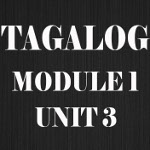

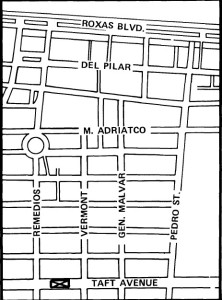

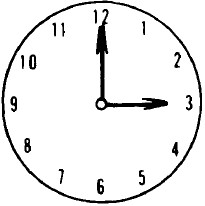

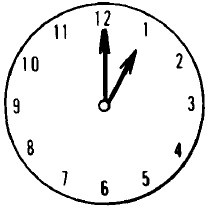
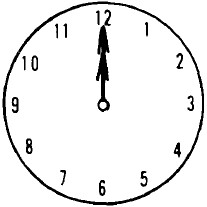



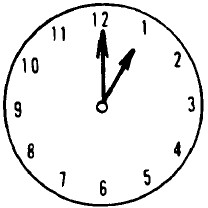
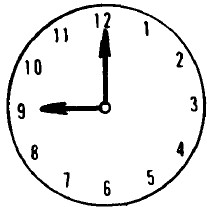
 Alas diyes impunto.
Alas diyes impunto. Alas otso impunto.
Alas otso impunto. Alas siyete impunto.
Alas siyete impunto. Alas onse impunto.
Alas onse impunto. 1. Ala una beynte-singko.
1. Ala una beynte-singko. 2. Alas sais singko.
2. Alas sais singko. 3. Ala una kinse.
3. Ala una kinse. 4. Alas singko diyes.
4. Alas singko diyes. 5. Alas kuwatro beynte
5. Alas kuwatro beynte 6. Alas dose beynte singko.
6. Alas dose beynte singko. Alas nuwebe y medya.
Alas nuwebe y medya. Alas siyete y kuwatro.
Alas siyete y kuwatro. Ala una treynta.
Ala una treynta. Alas dose y medya.
Alas dose y medya. Alas kuwatro y medya.
Alas kuwatro y medya. Alas sais kinse.
Alas sais kinse. Alas dose treynta.
Alas dose treynta. Alas dos y medya.
Alas dos y medya.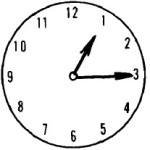 Ala una y kuwarto.
Ala una y kuwarto. Alas tres y medya
Alas tres y medya







 Menos kuwarto para alas tres.
Menos kuwarto para alas tres. Menos beynte para ala una.
Menos beynte para ala una. Menos diyes para alas kuwatro.
Menos diyes para alas kuwatro. Menos singko para ala una.
Menos singko para ala una. Menos kuwarto para alas dos.
Menos kuwarto para alas dos. Menos beynte para alas nuwebe.
Menos beynte para alas nuwebe.





